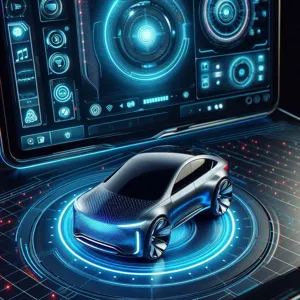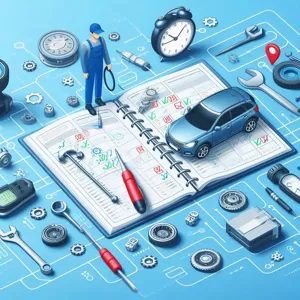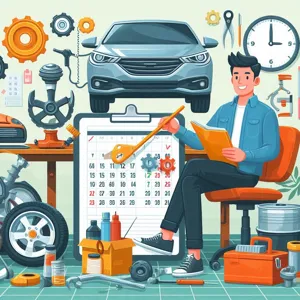Choosing the right family car is no small feat; it’s a decision that impacts your daily life, travel adventures, and the comfort and safety of your loved ones.
With an abundance of options on the market—from spacious SUVs to versatile minivans—finding the perfect vehicle can feel overwhelming. It’s not just about the latest features or sleek designs; it’s about practicality, reliability, and meeting the unique needs of your family. In this comprehensive guide, we’ll explore essential tips to help you navigate the car-buying process with confidence. From evaluating your space requirements and safety ratings to considering fuel efficiency and technology features, we’ll equip you with the knowledge to make an informed choice. Let’s embark on this journey together and discover how to select the ideal family car that will serve as a trusted companion for countless road trips, school runs, and family adventures for years to come.
1. Introduction: Importance of Choosing the Right Family Car

Choosing the right family car is more than just a practical decision; it’s an investment in your family’s safety, comfort, and lifestyle. With the ever-evolving automotive landscape, families today have a plethora of options, from spacious SUVs to compact crossovers, and electric vehicles to traditional sedans. Each choice offers unique benefits and features that can significantly impact your daily life.
The importance of selecting the perfect family car cannot be overstated. It’s the vehicle that will carry your loved ones to school, soccer practices, family road trips, and weekend getaways. A well-chosen car ensures that every journey is comfortable, safe, and enjoyable. It should accommodate the needs of your growing family, whether that means ample cargo space for strollers and sports equipment or advanced safety features to give you peace of mind on the road.
Moreover, the right family car can enhance your family’s overall experience, providing the convenience of technology that keeps everyone entertained during long drives, or the fuel efficiency that helps you save money on those frequent trips. As you embark on this important decision, it’s essential to consider what features matter most to you and your family, setting the foundation for countless memorable moments on the road ahead. In this guide, we’ll explore key factors to keep in mind as you navigate the exciting journey of finding your family’s perfect vehicle.
2. Assessing Your Family’s Needs
When it comes to choosing the perfect family car, understanding your family’s unique needs is paramount. Start by considering the size of your family and how it might grow in the coming years. If you have young children now but plan to expand your family, opting for a vehicle with extra space can save you from having to make another purchase sooner than expected.
Next, think about your daily routines and lifestyle. Do you often carpool with friends, or do you take long road trips on weekends? If you’re frequently hauling kids and their friends to soccer practice or school events, a spacious interior with ample legroom and comfortable seating becomes essential. Additionally, consider the amount of cargo space you need for strollers, sports equipment, or even family vacations. A car with flexible seating configurations, like a third row or fold-flat seats, can adapt to your varying needs.
Safety should also play a crucial role in your assessment. Look for cars with high safety ratings, advanced features like automatic emergency braking and lane departure warnings, and those that offer plenty of airbags to protect your precious cargo.
Finally, don’t forget about your budget. Factor in not just the purchase price but also long-term costs like fuel efficiency, maintenance, and insurance. By thoroughly assessing your family’s needs, you’ll be better equipped to choose a vehicle that fits your lifestyle and keeps your loved ones safe and comfortable on every journey.
3. Safety Features: What to Look For

When it comes to selecting the perfect family car, prioritizing safety features is non-negotiable. The safety of your loved ones should always be at the forefront of your decision-making process. So, what should you look for?
First and foremost, examine the car’s crash test ratings. Organizations like the National Highway Traffic Safety Administration (NHTSA) and the Insurance Institute for Highway Safety (IIHS) conduct rigorous crash tests and provide ratings that give you a good indication of how well a vehicle performs in real-world accident scenarios. Look for vehicles that consistently earn top scores in these evaluations.
Next, consider the array of advanced safety technologies that modern vehicles offer. Features such as adaptive cruise control, lane departure warning, and automatic emergency braking can significantly enhance your family’s protection on the road. These systems work together to prevent accidents, making them invaluable in today’s hectic driving environment. Additional technologies like blind-spot monitoring and rear cross-traffic alert can also help mitigate risks when changing lanes or backing out of parking spaces.
Don’t overlook the importance of airbags and their placement throughout the vehicle. A family car should come equipped with front, side, and curtain airbags to provide comprehensive protection in the event of a collision.
Another crucial safety aspect is the car’s structural integrity. Look for vehicles built with high-strength steel and crumple zones designed to absorb impact forces. These design features can significantly reduce the risk of injury during a crash, offering peace of mind for parents.
Lastly, consider child safety features if you have younger passengers. Models with easy-to-use LATCH systems for car seats, rear door child safety locks, and rear-seat reminders can make traveling with children safer and more convenient.
By carefully evaluating these safety features, you will be better equipped to choose a family car that ensures the well-being of your most precious cargo, providing you with the confidence to hit the road together.
4. Space and Comfort: Finding the Right Size
When it comes to selecting the perfect family car, space and comfort are non-negotiable factors that can significantly impact your driving experience. Families come in various shapes and sizes, and so do family vehicles. Whether you have a bustling brood of little ones, teenagers with friends in tow, or you’re simply a family that cherishes road trips, the right size car can make all the difference.
First and foremost, consider the number of passengers you typically transport. A compact SUV may suffice for a small family, while larger families might lean towards minivans or full-sized SUVs that offer ample seating for everyone. It’s important to not only focus on the number of seats but also on how comfortably those seats accommodate your family members. Test driving a vehicle will give you a sense of legroom, headroom, and overall comfort. Pay special attention to the third row of seats if you’re considering a larger vehicle, as they can sometimes feel cramped for adult passengers.
In addition to passenger space, cargo capacity should also be a key consideration. Think about how much gear you typically carry—strollers, sports equipment, luggage for family vacations—and ensure the vehicle you choose has enough cargo space to handle it all. Many vehicles offer flexible seating arrangements and storage options, allowing you to adapt the space based on your needs.
Lastly, don’t overlook the importance of features that enhance comfort, such as climate control, adjustable seating, and entertainment systems. In-car entertainment can be a lifesaver on long drives, keeping the peace amongst passengers. Additionally, consider options like panoramic sunroofs that bring in natural light, creating a more inviting atmosphere for everyone.
Ultimately, finding the right size car is about balancing space and comfort, ensuring that every family member can enjoy the journey as much as the destination. Take your time to explore various models, keeping your specific needs in mind, and you’ll be well on your way to making a choice that will serve your family well for years to come.
5. Fuel Efficiency: Balancing Cost and Environment

When it comes to selecting the ideal family car, fuel efficiency stands out as a critical consideration that intertwines both budgetary concerns and environmental responsibility. In today’s world, where fuel prices fluctuate and environmental awareness grows, finding a vehicle that offers excellent mileage without sacrificing comfort and space is essential for the modern family.
First and foremost, consider how often your family will be on the road. If you have a busy schedule filled with school runs, weekend getaways, and road trips, a fuel-efficient vehicle can save you significant money at the pump over time. Look for cars with high miles per gallon (MPG) ratings and consider whether a hybrid or electric option might suit your lifestyle. Many manufacturers now offer models that combine the benefits of traditional gasoline engines with electric capabilities, providing the best of both worlds.
Beyond cost savings, choosing a fuel-efficient car aligns with a more sustainable lifestyle. By opting for a vehicle that consumes less fuel, you contribute to reducing greenhouse gas emissions, a crucial factor in combating climate change. Families that prioritize eco-friendliness can feel good knowing they are making a responsible choice not just for their wallets but for the planet as well.
When assessing fuel efficiency, don’t just look at the numbers on paper. Take into account the type of driving you do most frequently. City driving usually results in lower MPG due to frequent stops and starts, while highway driving can yield better fuel economy. Also, consider the overall size and weight of the vehicle; larger cars typically consume more fuel. Balancing these factors will help you find a car that meets your family’s needs while keeping fuel costs manageable.
Lastly, remember that fuel efficiency is not the only factor to consider in your decision. Ensure that the car also meets your family’s safety, space, and comfort requirements. By considering fuel efficiency alongside these factors, you can make an informed decision that benefits your family and the environment, all while enjoying the adventures that come with family life.
6. Reliability and Maintenance Costs
When it comes to choosing the perfect family car, reliability and maintenance costs play a pivotal role in your decision-making process. After all, the last thing you want is to be stranded on the side of the road with a car that leaves you questioning your investment. A reliable vehicle not only ensures peace of mind during your daily commutes and family road trips but also contributes to the long-term satisfaction of your purchase.
Begin by researching the reputation of various makes and models. Brands renowned for their reliability often come with positive reviews, high safety ratings, and a history of longevity. Look for vehicles that consistently score well in consumer reports and reliability surveys, as these indicators can provide valuable insight into the car’s performance over time.
Once you’ve narrowed down your options, consider the maintenance costs associated with each vehicle. While some cars may have a lower purchase price, they can end up being more expensive to maintain due to frequent repairs or costly parts. Check for average repair costs, the availability of parts, and the vehicle’s warranty coverage. Additionally, vehicles with more advanced technology and features may require specialized service, which can further inflate maintenance expenses.
Don’t forget to factor in fuel efficiency, as this can significantly impact your overall running costs. Opting for a vehicle with good gas mileage can save you money at the pump, particularly for a family that may drive long distances for vacations or daily activities.
Ultimately, a family car should be a blend of reliability and reasonable maintenance costs, ensuring that it can handle the demands of your busy life without breaking the bank. By prioritizing these factors, you can make a well-informed choice that keeps your family safe and your budget intact.
7. Technology and Entertainment Features

In today’s fast-paced world, technology and entertainment features have become pivotal in selecting the perfect family car. With family road trips and daily commutes often extending for hours, having the right tech can make all the difference in keeping everyone comfortable and entertained.
When assessing potential vehicles, begin by considering the infotainment system. A user-friendly interface with a responsive touchscreen, Bluetooth connectivity, and compatibility with smartphone apps like Apple CarPlay and Android Auto can provide seamless access to navigation, music, and communication. Look for systems that allow multiple device connections, enabling every family member to stay connected without any hassle.
Next, think about in-car entertainment options. Many modern family vehicles now come equipped with rear-seat entertainment systems, complete with screens mounted on the back of the front seats, perfect for streaming movies or playing games during long drives. If these features are not included, explore options for installing aftermarket solutions or consider vehicles that offer built-in Wi-Fi hotspots, keeping your family connected on the go.
Safety technology is another crucial element. Features such as adaptive cruise control, lane-keeping assist, and blind-spot monitoring enhance peace of mind while driving. Many cars also offer advanced driver-assistance systems (ADAS) that use cameras and sensors to help prevent accidents. These technologies not only protect your loved ones but also make driving a more enjoyable experience.
Finally, don’t overlook the importance of charging ports and power outlets throughout the vehicle. Ensuring that there are enough USB ports or traditional power outlets helps keep devices charged, allowing for uninterrupted entertainment and connectivity as you travel.
By prioritizing technology and entertainment features, you can create a more enjoyable and engaging experience for your family, making every journey on the road memorable. Choosing a family car that caters to both convenience and entertainment ensures that everyone, from toddlers to teenagers, can enjoy the ride, turning mundane trips into exciting adventures.
8. Storage Solutions: Making Room for Everyone
When it comes to selecting the perfect family car, one of the most critical aspects to consider is storage solutions. Family outings can often involve a plethora of gear—from strollers and sports equipment to luggage and snacks for road trips. Ensuring that your vehicle can accommodate all of these necessities without sacrificing comfort is essential for a stress-free experience on the road.
Start by evaluating the trunk space and interior storage options. A spacious trunk is a must-have for any family car, but don’t overlook the value of clever interior storage solutions. Look for vehicles that offer under-seat storage compartments, seatback pockets, and overhead bins. These features can help you stow away smaller items and keep the cabin organized, making it easier to find essentials when you need them.
Additionally, consider the seating configuration. Vehicles with a versatile seating arrangement, such as fold-flat rear seats, can significantly enhance your storage capabilities. This flexibility allows you to adapt your car’s layout to suit different needs—whether you’re hauling sports gear for a weekend game or packing up for a family vacation.
Also, think about accessibility. Sliding doors, often found in minivans, offer easy access to the back seats, making it simpler for kids to get in and out, especially in tight parking spots. Look for features that enhance convenience, like a power liftgate that allows you to open the trunk with a simple push of a button, freeing your hands for carrying bags or children.
Incorporating these thoughtful storage solutions into your decision-making process will not only keep your family organized but also transform your car into a functional family hub, ready for any adventure that comes your way. By prioritizing both space and convenience, you’ll ensure that your chosen family car is equipped to handle the hustle and bustle of daily life while keeping everyone comfortable and happy on the journey ahead.
9. Test Driving: What to Observe
When it comes to choosing the perfect family car, the test drive is a crucial step that can often make or break your decision. This is your opportunity to experience the vehicle firsthand, so it’s essential to approach it with a keen observer’s eye. Here’s what to look for during your test drive:
**1. Comfort and Space:** Once you’re behind the wheel, pay attention to how comfortable the seats feel, both for you and your passengers. Adjust the front seats and check the legroom in the back—this is especially important for families with growing children or those who frequently carpool. Don’t hesitate to sit in all seats, including the third row, if applicable, to ensure everyone has enough space.
**2. Visibility:** Assess your sightlines from the driver’s seat. Are there any blind spots that could pose a problem? Check how the vehicle handles in various conditions, including looking through the rearview and side mirrors. Good visibility is vital for safe driving, especially in busy neighborhoods or when navigating tight parking spaces.
**3. Handling and Performance:** Pay attention to how the car responds as you drive. Is the steering responsive? Do you feel in control even during sharp turns? Take note of the vehicle’s acceleration and braking capabilities—these factors will significantly impact your overall driving experience.
**4. Noise Levels:** During your test drive, listen carefully. A family car should provide a quiet cabin, allowing for comfortable conversations and peaceful rides, particularly on longer journeys. Notice how road noise, wind noise, and engine sounds affect the overall ambience.
**5. Technology and Features:** Test out the infotainment system, GPS, and any safety features like lane assistance and blind-spot monitoring. Ensure that these tech features are user-friendly and accessible. Check the connectivity options for devices—Bluetooth and USB ports are essential for family road trips and keeping everyone entertained.
**6. Cargo Space:** Don’t forget to assess the cargo area. Open the trunk and see if it meets your family’s needs for groceries, sports equipment, strollers, or luggage. If you frequently embark on family adventures, consider how easy it is to load and unload items.
**7. Family-Friendly Features:** Look for features that cater specifically to families, such as rear-seat entertainment systems, easy access to the back rows, and ample cup holders. If you have young children, see how simple it is to install car seats and whether the vehicle has appropriate safety anchor points.
By taking the time to carefully observe these elements during your test drive, you’ll gain invaluable insights that will help you make an informed decision. Remember, this isn’t just about choosing a car; it’s about selecting a vehicle that will accommodate your family’s lifestyle and ensure many happy journeys ahead.
10. Budgeting: Understanding Financing Options
When it comes to choosing the perfect family car, budgeting and understanding your financing options are crucial steps that can significantly impact your overall experience. Begin by assessing your financial situation and determining how much you can realistically afford to spend on a vehicle. This not only includes the purchase price but also factors in insurance, fuel, maintenance, and potential repairs.
Once you have a clear picture of your budget, explore different financing options available to you. Traditional auto loans from banks or credit unions can offer competitive interest rates, especially if you have a good credit score. However, don’t overlook the benefits of dealership financing; many manufacturers provide enticing incentives, such as low or zero-percent interest rates to attract buyers.
Another financing route is leasing, which can be an appealing option for families that enjoy driving new cars every few years. Leasing typically requires a lower down payment and offers lower monthly payments compared to purchasing a vehicle. This means you can drive a higher-end model with more features without stretching your budget too thin.
Additionally, consider the total cost of ownership, including depreciation. Some vehicles retain their value better than others, which can influence your future resale or trade-in value. It’s wise to research vehicle reliability and maintenance costs to ensure that your chosen car won’t become a financial burden down the line.
Finally, don’t shy away from negotiating terms and seeking multiple quotes before making a decision. Taking the time to thoroughly understand your financing options and their implications will empower you to make a wise investment that suits your family’s needs—both now and in the years to come.
11. Comparing New vs. Used Family Cars
When it comes to choosing the perfect family car, one of the most significant decisions you’ll face is whether to invest in a new or used vehicle. Both options have their distinct advantages and challenges, and understanding these can help you make an informed choice that suits your family’s needs and budget.
**New Family Cars**: Purchasing a new family car often comes with the allure of the latest technology, modern safety features, and the peace of mind that comes with a full manufacturer’s warranty. New cars are typically equipped with advanced driver-assistance systems, more efficient fuel consumption, and enhanced comfort features that can make family journeys more enjoyable. Additionally, you have the opportunity to customize your new vehicle with specific colors, trims, and add-ons that fit your family’s lifestyle perfectly. However, this option comes with a higher price tag, and the rapid depreciation of new vehicles can be a significant consideration. As soon as you drive off the lot, the value of your new car can drop by thousands, which may not be ideal if you plan to resell it in a few years.
**Used Family Cars**: On the other hand, opting for a used family car can provide substantial savings. Generally, you can get much more vehicle for your money, allowing you to choose a higher-end model or a larger vehicle than you might afford new. Used cars have already undergone their most significant depreciation, meaning you’re likely to get a better resale value when the time comes to upgrade. However, when considering a used vehicle, it’s essential to conduct thorough research on the car’s history, including maintenance records, accident reports, and previous ownership. While you can find excellent options with robust reliability ratings, some used cars may come with hidden issues, so a trusted mechanic’s inspection is advisable.
Ultimately, the decision between new and used family cars boils down to your specific needs, budget, and preferences. Whether you prioritize the latest features and warranty coverage or value affordability and better resale potential, weighing the pros and cons of each option will guide you toward making the best choice for your family.
12. Reviews and Recommendations: Where to Find Them
When it comes to selecting the perfect family car, nothing beats the power of reviews and recommendations. These insights can be invaluable in helping you navigate the vast array of options available on the market. But where exactly should you look for these trusted opinions?
Start by diving into automotive websites that specialize in car reviews. Platforms like Edmunds, Car and Driver, and Kelley Blue Book offer detailed analyses of various vehicles, highlighting their pros and cons based on expert evaluations and real-world testing. These sites often include user reviews, which can provide a wealth of information about how a car performs in everyday family scenarios.
Social media platforms can also be a goldmine for recommendations. Join parenting groups or forums where family car discussions take place. Here, parents share their personal experiences, pointing out features that worked well for their families, as well as those that didn’t. Engaging with these communities allows you to tap into a network of individuals who have hands-on experience with the vehicles you’re considering.
Don’t overlook the power of word-of-mouth recommendations from friends, family, and colleagues. Their firsthand experiences can offer a unique perspective that you might not find in formal reviews. Ask questions about safety, comfort, fuel efficiency, and the car’s suitability for family outings.
Lastly, consider visiting local dealerships and taking advantage of test drives. While at the dealership, ask the sales representatives about customer feedback they’ve received on various models. Often, they can provide insights into which vehicles are popular among families and why.
By leveraging these diverse sources of reviews and recommendations, you’ll be well-equipped to make an informed decision on the perfect family car that meets your needs and enhances your family’s driving experience.
13. Preparing for the Future: Growth and Changes in Family Size
When selecting the perfect family car, it’s essential to consider not just your current needs but also how your family’s size and lifestyle may evolve in the coming years. Families are dynamic entities; children grow, lifestyles change, and sometimes even additional family members come into the picture. As you weigh your options, think about your long-term plans and how your vehicle can adapt alongside them.
Start by assessing your current family structure. Are you planning to have more children? Do you anticipate needing to transport grandparents, friends, or even pets regularly? These considerations can significantly influence the type of vehicle you choose. For instance, opting for a spacious SUV or a minivan with ample seating and cargo capacity can ensure that you have room to grow without needing to make another purchase in just a few years.
Additionally, consider features like modular seating configurations that can easily be adjusted to accommodate more passengers or larger items. Many modern family vehicles come equipped with third-row seating or expandable trunk space, making them versatile enough to handle various situations, from school runs to family road trips.
Moreover, think about the technology and safety features that will benefit a growing family. As kids age, their needs will change—from car seats for infants to tech-savvy entertainment systems for teenagers. Investing in a vehicle that offers flexible technology options can make those transitions smoother and keep everyone entertained on longer journeys.
Ultimately, preparing for the future is about envisioning where you see your family in the next five to ten years. By keeping growth and changes in family size at the forefront of your decision-making process, you can choose a family car that not only meets your current needs but also serves as a reliable companion for all the adventures ahead.
14. Eco-Friendly Options: Considering Hybrid and Electric Cars
In an age where environmental consciousness is more crucial than ever, considering eco-friendly options like hybrid and electric cars is not just a trend; it’s a responsible choice for families looking to reduce their carbon footprint. As you explore your options, it’s essential to understand the benefits these vehicles offer, both for your family and the planet.
Hybrid cars combine a traditional gasoline engine with an electric motor, allowing for improved fuel efficiency and reduced emissions. This makes them a great choice for families who want to save on fuel costs without compromising on performance. Many modern hybrids offer spacious interiors and advanced safety features, ensuring that your family travels comfortably and securely.
On the other hand, fully electric cars take eco-friendliness to the next level. With zero tailpipe emissions, they are an excellent option for families committed to sustainability. Electric vehicles (EVs) come equipped with large batteries, allowing for longer ranges and ample space for passengers and cargo. Plus, with the growing network of charging stations, it’s easier than ever to keep your EV powered up during family road trips or daily commutes.
When considering eco-friendly options, assess your family’s driving habits. If you frequently take long trips, a hybrid might be more suitable, offering the flexibility of both electric and gasoline. However, if your daily routine consists of short trips around town, an electric vehicle could provide significant savings on fuel and maintenance.
Additionally, many manufacturers are now focusing on creating family-friendly electric and hybrid models that boast ample cargo space, user-friendly technology, and impressive safety ratings. It’s worth exploring these options to find a vehicle that meets your family’s needs while also contributing to a cleaner environment.
Incorporating eco-friendly vehicles into your family’s lifestyle not only reflects a commitment to sustainability but can also provide long-term savings and a smoother driving experience. So, as you navigate your options, make sure to consider hybrids and EVs—they could be the perfect fit for your family, allowing you to enjoy the journey while caring for the planet.
15. Conclusion: Making an Informed Decision
In conclusion, choosing the perfect family car is not merely a transaction; it’s a significant decision that can profoundly impact your family’s daily life and adventures. As you reflect on the insights shared throughout this guide, remember that the key lies in balancing your family’s unique needs with your budgetary constraints.
Start by assessing your family’s lifestyle: How many passengers do you typically carry? Do you frequently embark on long road trips or daily commutes? Consider the space you need for car seats, sports equipment, or family pets. Reliability and safety should be paramount in your decision-making process, so be sure to research safety ratings and read consumer reviews.
Fuel efficiency and maintenance costs also play critical roles in your long-term satisfaction and financial stability. Look for vehicles that not only meet your current needs but also have the flexibility to adapt as your family grows or changes.
Finally, don’t underestimate the value of a test drive. This is your opportunity to experience the car firsthand—its comfort, handling, and overall feel. Engage your family in the process, allowing everyone to voice their preferences and priorities.
By taking the time to consider these essential factors, you empower yourself to make an informed decision that will serve your family for years to come. The right family car is out there, waiting to be discovered—one that will not only transport you safely but also create lasting memories on the open road. Happy car hunting!
As we wrap up our comprehensive guide on choosing the perfect family car, we hope you feel empowered and informed to make the best decision for your family’s unique needs. Selecting a vehicle is more than just picking a model; it’s about finding a reliable companion that will support your adventures, comfort your loved ones, and adapt to the ever-changing dynamics of family life. By considering key factors such as safety, space, fuel efficiency, and technology features, you can ensure that your choice not only fits your budget but also enhances your family’s travel experiences. Remember, the right car can transform mundane errands into exciting journeys, so take your time, do your research, and drive away with confidence. Happy car hunting, and may your new vehicle bring countless memories as you navigate life’s roads together!




































